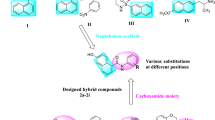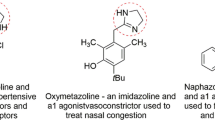Abstract
The enzyme sterol 24-C-methyltransferase (SMT) belongs to the family of transferases, specifically to the one-carbon transferring methyltransferases. SMT has been found playing a major role during the production of steroids, especially for the biosynthesis of ergosterol, which is the major membrane sterol in leishmania parasites, causing leishmaniasis. However, SMT and ergosterol are not found in mammals, so, an extensive study has been carried out over the susceptible SMT protein, which is found to be highly conserved among all the Leishmania species and holds a significant anti-leishmanial drug target. To date, there is no computational data available for SMT, due to its highly unexplored profile. In this work, a complete set of structural attributes have been examined through the available computational procedures, along with an attempt to characterize the most capable modeling server available. The exploration ranges from physicochemical characterization, pairwise alignment, secondary structure prediction, to active site detection. With this information, a docking study was carried out to find the compound that best binds into the active site. Moreover, molecular dynamics simulation was conducted to examine the stability of the homology modeled protein and the ligand–enzyme complex. The results indicate that the ligand–enzyme complex is more stable.









Similar content being viewed by others
References
Yokota T (1997) The structure, biosynthesis and function of brassinosteroids. Trends Plant Sci 2:137–143. doi:10.1016/S1360-1385(97)01017-0
Thompson MJ, Svoboda JA, Kaplanis JN, Robbins WE (1972) Metabolic pathways of steroids in insects. Proc R Soc Lond 180:203–221. doi:10.1098/rspb 1972.0015
Hendrix JW (1970) Sterols in growth and reproduction of fungi. Annu Rev Phytopathol 8:111–130. doi:10.1146/annurev.py.08.090170.000551
Nes WD, Zhou W, Ganapathy K, Liu J, Vatsyayan R, Chamala S, Hernandez K, Miranda M (2009) Sterol 24-C-methyltransferase: an enzymatic target for the disruption of ergosterol biosynthesis and homeostasis in Cryptococcus neoformans. Arch Biochim Biophys 481:210–218. doi:10.1016/j.abb.2008.11.003
Davies CR, Kaye P, Croft SL, Sundar S (2003) Leishmaniasis: new approaches to disease control. BMJ 82:326–377
Prüss-Üstün A, Corvalán C (2006) Preventing disease through healthy environments. World Health Organization, Geneva
Goto Y, Bhatia A, Raman AS, Vidal SEZ, Bertholet S, Coler RN, Howard RF, Reed SG (2009) Leishmania infantum sterol 24-C-methyltransferase formulated with MPL-SE induces cross-protection against L. major infection. Vaccine 27:2884–2890. doi:10.1016/j.vaccine.2009.02.079
Wilson ME, Young BM, Andersen KP, Weinstock JV, Metwali A, Ali KM (1995) A recombinant Leishmania chagasi antigen that stimulates cellular immune responses in infected mice. Infect Immun 63:2062–2069
Murray HW, Berman JD, Davies CR, Saravia NG (2005) Advances in leishmaniasis. Lancet 366:1561–1577. doi:10.1016/S0140-6736(05)67629-5
Goto Y, Bogatzki LY, Bertholet S, Coler SN, Reed SG (2007) Protective immunization against visceral leishmaniasis using Leishmania sterol 24-C-methyltransferase formulated in adjuvant. Vaccine 25:7450–7458. doi:10.1016/j.vaccine.2007.08.001
Siqueira-Neto JL, Song O, Oh H, Sohn J, Yang G, Nam J, Jang J, Cechetto J, Lee CB, Moon S, Genovesio A, Chatelain E, Christophe T, Freitas-Junior LH (2010) Antileishmanial high-throughput drug screening reveals drug candidates with New Scaffolds. PLoS Negl Trop Dis 4(5):e675. doi:10.1371/journal.pntd.0000675
Monzote L (2009) Current treatment of leishmaniasis: a review. Open Antimicrob Agents J 1:9–19
Ator MA, Schmidt SJ, Adams JL, Dolle RE (1989) Mechanism and inhibition of ∆-sterol methyltransferase from Candida albicans and Candida tropicalis. Biochemistry 28:9633–9640. doi:10.1021/bi00451a014
Nes WD, Xu S, Parish EJ (1989) Metabolism of 24(R, S)-epiminolanosterol to 25-aminolanosterol and lanosterol by Gibberella fujikuroi. Arch Biochem Biophys 272:323–331. doi:10.1016/0003-9861(89)90226-9
Nes WD (2000) Sterol methyltransferase: enzymology and inhibition. Biochim Biophys Acta 1529:63–68. doi:10.1016/S1388-1981(00)00138-4
Guo D, Nichols D, Zhou W, Lopez M, Mangla AT, Nes WD (1997) Antifungal sterol biosynthesis inhibitors. Subcell Biochem 28:89–116
Zhou W, Nes W (2003) Sterol methyltransferase2: purification, properties and inhibition. Arch Biochem Biophys 420:18–34. doi:10.1016/j.abb.2003.08.029
Nes WD, McCourt BS, Marshall JA, Ma J, Dennis AL, Lopez M, Li H, He L (1999) Site-directed mutagenesis of the sterol methyl transferase active site from Saccharomyces cerevisiae results in formation of novel 24-ethyl sterols. J Org Chem 64:1535–1542. doi:10.1021/jo9819943
Mangla AT, Nes WD (2002) Sterol C-methyltransferase from Prototheca wickerhamii. Mechanism, sterol specificity and inhibition. Bioorg Med Chem 8:925–936
Ator MA, Schmidt SJ, Adams JL, Dolle RE, Kruse LI, Frey CL, Barone JM (1989) Synthesis, specificity, and antifungal activity of inhibitors of the Candida albicans ∆24-sterol methyl transferase. J Med Chem 35:100–106
Nes WD, Guo D, Zhou W (1997) Substrate-based inhibitors of the (S)-adenosyl-l-methionine: ∆24 (25)—to ∆24 (28)—sterol methyltransferase from Saccharomyces cerevisiae. Arch Biochem Biophys 342:68–81. doi:10.1006/abbi 1997.9984
Rahman MD, Pascal RA (1990) Inhibitors of ergosterol biosynthesis and growth of the trypansomatid protozoan Crithidia fasciculata. J Biol Chem 265:4989–4996
Zhou W, Song Z, Kanagasabai R, Liu J, Jayasimha P, Sinha A, Veeramachanemi P, Miller MB, Nes WD (2004) Mechanism-based enzyme inactivators of phytosterol biosynthesis. Molecules 9:185–203. doi:10.3390/90400185
Nes WD, He L, Mangla AT (1998) 4, 4, 14α-Trimethyl-9β, 19-cyclo-5α-26-homocholesta-24, 26-dien-3 β-ol: a potent mechanism-based inactivator of ∆24(25)—to ∆25(27)—sterol methyl transferase. Bioorg Med Chem Lett 8:3449–3452
Zhou W, Song Z, Liu J, Miller MB, Nes WD (2004) 24-Thiacycloartanol, a potent mechanism-based inactivator of plant sterol methyltransferase. Tetrahedron Lett 45:875–878. doi:10.1016/j.tetlet.2003.10.203
Eswar N, Eramian D, Webb B, Shen MY, Sali A (2008) Protein structure modeling with MODELLER. Structural proteomics, vol 426. Humana Press, Totowa, pp 145–159
Rodriguez R, Chinea G, Lopez N, Pons T, Vriend G (1998) Homology modeling, model and software evaluation: three related resources. Bioinformatics 14:523–528. doi:10.1093/bioinformatics/14.6.523
Gopalakrishnan K, Sowmiya G, Sheik SS, Sekar K (2007) Ramachandran plot on the web (2.0). Protein Pept Lett 14:669–671
Johnson M, Zaretskaya I, Raytselis Y, Merezhuk Y, McGinnis S, Madden TL (2008) NCBI BLAST: a better web interface. Nucleic Acids Res 36:W5–W9. doi:10.1093/nar/gkn201
Humphrey W, Dalke A, Schulten K (1996) VMD: visual molecular dynamics. J Mol Graph 14:33–38. doi:10.1016/0263-7855(96)00018-5
Pearlman DA, Case DD, Caldwell JW, Ross ZS, Cheatham TE, DeBolt S (1995) AMBER, a package of computer programs for applying molecular mechanics, normal mode analysis, molecular dynamics and free energy calculations to simulate the structural and energetic properties of molecules. Comput Phys Commun 91:1–41. doi:10.1016/0010-4655(95)00041-D
Pettersen EF, Gpddard TD, Huang CC, Couch GS, Greenblatt DM, Meng EC, Ferrin TE (2004) UCSF Chimera—a visualization system for exploratory research and analysis. J Comput Chem 25:1605–1612. doi:10.1002/jcc.20084
Laskowski RA, MacArthur MW, Moss DS, Thornton JM (1993) PROCHECK: a program to check the stereochemical quality of protein structures. J Appl Cryst 26:283–291. doi:10.1107/S0021889892009944
Eisenberg D, Lüthy R, Bowie JU (1997) VERIFY3D: assessment of protein models with three-dimensional profiles. Methods Enzym 277:396–404. doi:10.1016/S0076-6879(97)77022-8
Wallner B, Elofsson A (2006) Identification of correct regions in protein models using structural, alignment, and consensus information. Protein Sci 15:900–913. doi:10.1110/ps.051799606
Wiederstein M, Sippl MJ (2007) ProSA-web: interactive web service for the recognition of errors in three-dimensional structures of proteins. Nucleic Acids Res 35:W407–W410. doi:10.1093/nar/gkm290
Laskowski RA, Watson JD, Thornton JM (2005) ProFunc: a server for predicting protein function from 3D structure. Nucleic Acids Res 33:W89–W93. doi:10.1093/nar/gki414
Wilkins MR, Gasteiger E, Bairoch A, Sanchez JC, Williams KL, Appel RD, Hochstrasser DF (1999) Protein identification and analysis tools in the ExPASy server. The proteomics protocols handbook. Humana Press, Totowa, pp 571–607. doi:10.1385/1-59259-890-0:571
Sivakumar K, Balaji S, Krishnan GR (2007) In silico characterization of antifreeze proteins using computational tools and servers. J Chem Sci 119:571–579
Sankararaman S, Sha F, Kirsch JF, Jordan MI, Sjölander K (2010) Active site prediction using evolutionary and structural information. Bioinformatics 26:617–624. doi:10.1093/bioinformatics/btq008
Mangla AT, Nes WD (2000) Sterol C-methyl transferase from Prototheca wickerhamii mechanism, sterol specificity and inhibition. Bioorg Med Chem 8:925–936. doi:10.1016/S0968-0896(00)00040-7
Morris GM, Huey R, Lindstrom W, Sanner MF, Belew RK, Goodsell GS, Olson AJ (2009) AutoDock4 and AutoDockTools4: automated docking with selective receptor flexibility. J Comput Chem 30:2785–2791. doi:10.1002/jcc.21256
Trott O, Olson AJ (2010) AutoDock Vina: improving the speed and accuracy of docking with a new scoring function, efficient optimization, and multithreading. J Comput Chem 31:455–461. doi:10.1002/jcc.21334
Martí-Renom MA, Stuart AC, Fiser A, Sánchez R, Melo F, Šali A (2000) Comparative protein structure modeling of genes and genomes. Annu Rev Biophys Biomol Struct 29:291–325. doi:10.1146/annurev.biophys.29.1.291
Costanzi S (2012) Homology modeling of class ag protein-coupled receptors. Homology modeling. Humana Press, New York, pp 259–279
Nes WD, Marshall JA, Jia Z, Jaradat TT, Song Z, Jayasimha P (2002) Active site mapping and substrate channeling in the sterol methyltransferase pathway. J Biol Chem 277:42549–42556. doi:10.1074/jbc.M204223200
Boissy G, O’Donohue M, Gaudemer O, Perez V, Pernollet JC, Brunie S (1999) The 2.1 Å structure of an elicitin–ergosterol complex: a recent addition to the sterol carrier protein family. Pro Sci 8:1191–1199. doi:10.1110/ps.8.6.1191
Pruthvi J, Nes WD (2008) Photoaffinity labeling and mutational analysis of 24-C-sterol methyltransferase defines the AdoMet binding site. Lipids 43:681–693. doi:10.1007/s11745-008-3198-x
Shahlaei M, Madadkar-Sobhani A, Mahname K, Fassihi A, Saghaie L, Mansourian M (2011) Homology modeling of human CCR5 and analysis of its binding properties through molecular docking and molecular dynamics simulation. Biochim Biophys Acta 1808:802–817. doi:10.1016/j.bbamem.2010.12.004
Saleem A, Azam SS, Zarina S (2012) Docking and molecular dynamics simulation studies on glycation-induced conformational changes of human paraoxonase 1. Eur Biophys J 41:241–248. doi:10.1007/s00249-011-0779-z
Acknowledgments
Authors are thankful for the support provided by Higher Education Commission (HEC) of Pakistan.
Author information
Authors and Affiliations
Corresponding author
Electronic supplementary material
Below is the link to the electronic supplementary material.
Rights and permissions
About this article
Cite this article
Azam, S.S., Abro, A., Raza, S. et al. Structure and dynamics studies of sterol 24-C-methyltransferase with mechanism based inactivators for the disruption of ergosterol biosynthesis. Mol Biol Rep 41, 4279–4293 (2014). https://doi.org/10.1007/s11033-014-3299-y
Received:
Accepted:
Published:
Issue Date:
DOI: https://doi.org/10.1007/s11033-014-3299-y




